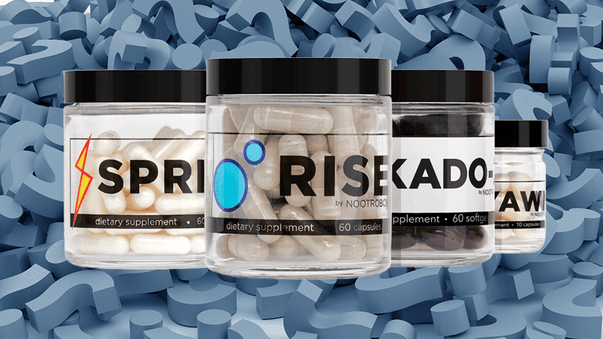The Fast March of Synthetic Biology

Some of the news below touches on the emerging science of synthetic biology - the design and creation of life forms from basic building blocks. For those who want to learn about and understand the potential of synthetic biology, there’s a new book. In Synthetic: How Life Got Made, cultural anthropologist Sophia Roosth reveals how synthetic biologists make new living things in order to understand better how life works. See also the book’s review in Nature News, with a short outline of synthetic biology’s history and prospects. IEEE Spectrum has another recent introduction to the discipline.
Synthetic biology is one of the most promising roads to human enhancement and biosphere engineering. It seems likely that, in the next few decades, designer life forms assembled by bioengineers - just like children build with LEGO blocks - will heal the planet, produce food and medicines, and then become part of human bodies to give next generations a longer and healthier life.
It’s important to realize that all these wonders won’t happen soon, and probably not in useful time for the older generations. However, we can and should feel happy for our grandchildren, and also for belonging to a species that is learning how to master nature and remake itself. You’re a small part of something big, and beautiful. Never forget that, and let it help you feel better.
So, here’s a sample of recent human enhancement-related news that I found especially interesting. I hope you will, too.
New ways to rewarm living tissue preserved at very low temperatures. Researchers at the University of Minnesota have found new ways to rewarm living tissue, preserved at very low temperatures, by heating embedded magnetic nanoparticles with radio waves. The scientists were able to successfully rewarm large-scale porcine heart tissue up to 50 ml in volume. The research results, published in Science Translational Medicine (open access), are considered a major step forward in saving millions of human lives by increasing the availability of organs and tissues for transplantation through the establishment of tissue and organ banks. Cryonics fans shouldn’t hold their breath though - there’s still no way to avoid or repair critical damage tissues caused by extreme freezing. But perhaps, one day …
Combining 3D printing and synthetic biology. Imperial College scientists in London have received a grant for a new, innovative research project that combines 3D printing and synthetic biology. The scientists will engineer cells with new designer DNA, which will act like a computer program and instruct the cells to produce new materials in made-to-order shapes, sizes, biological functions and chemical properties. Among the possible future applications, wearable technology such as infection-detector sensors embedded in clothing, or technology useful in the development of new antibiotics.
Toward a synthetic yeast genome. A research team, led by NYU Langone Medical center, has built five new synthetic yeast chromosomes, replacing 30 percent of a key organism’s genetic material with engineered components. According to the scientists, the results of the study, published in Science, set the stage for completion of designer, synthetic genomes to address unmet needs in medicine and industry. By the end of the year, the researchers hope to build synthetic versions of all 16 chromosomes in a type of yeast.
Toward artificial life? Scientists create artificial mouse embryo. Scientists at the University of Cambridge have created a mouse embryo almost from scratch, using genetically-modified mouse stem cells and an extracellular matrix - a 3D scaffolding on which the cells can grow. The results of the study, published in Science, show that the researchers were able to grow a structure capable of assembling itself and whose development and architecture very closely resembled the natural embryo. The scientists hope their approach will permit studying key events in human development without actually having to work on human embryos, but it’s difficult to refrain from imagining future artificial life forms.
New encouraging developments in nanorobotic research for future medical applications. Researchers at Tohoku University and Japan Advanced Institute of Science and Technology have developed programmable biomolecular robots one millionth of a meter across, similar in size to human cells. The nanobots can recognize DNA signals and change shape according to the signals received. The open access study, published in Science Robotics, could lead to functional bio-inspired robots designed on a molecular basis, which could be used in future medical applications inside the human body.
Brains are different from digital computers, somewhat similar to analog quantum computers. Neuroscientists at University of California Los Angeles (UCLA) have found that the brain is ten times more active than previously measured, with analog as well as digital processing work. The results of the study, published in Science, suggest that dendrites - branches of neurons that make up more than 90 percent of neural tissue - are hybrids that do both analog and digital computations, fundamentally different from purely digital computers, but somewhat similar to analog quantum computers. According to the researchers, this could fundamentally change our understanding of how the brain computes information and open the way to new approaches for treating neurological disorders and for developing intelligent computers.
More Articles
Don't miss a beat! In our Pulse Newsletter, Thrivous curates the most important news on health science and human enhancement, so you can stay informed without wasting time on hype and trivia. It's part of the free Thrivous newsletter. Subscribe now to receive email about human enhancement, nootropics, and geroprotectors, as well as company news and deals.
Read more articles at Thrivous, the human enhancement company. You can browse recent articles in Thrivous Views. See other Pulse Newsletter articles. Or check out an article below.
-
Therapy or Enhancement?
Welcome to this new issue of Pulse, your weekly newsletter focused on human enhancement today and tomorrow, brought to you ...
-
HVMN Nootrobox Full Stack vs Thrivous Nootropic Stack
HVMN Nootrobox Full Stack is a combination of nootropic dietary supplements that compete with Thrivous Nootropic Stack. Nootropics improve focus, ...


